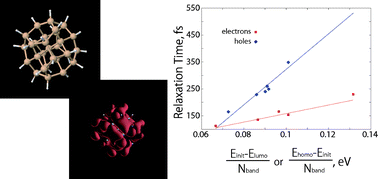Symmetric band structures and asymmetric ultrafast electron and hole relaxations in silicon and germaniumquantum dots: time-domain ab initio simulation
Abstract
State-of-the-art time domain density functional theory and non-adiabatic (NA) molecular dynamic simulations are used to study phonon-induced relaxation of photoexcited electrons and holes in

- This article is part of the themed collections: Solar Energy Conversion and Solar energy conversion

 Please wait while we load your content...
Please wait while we load your content...